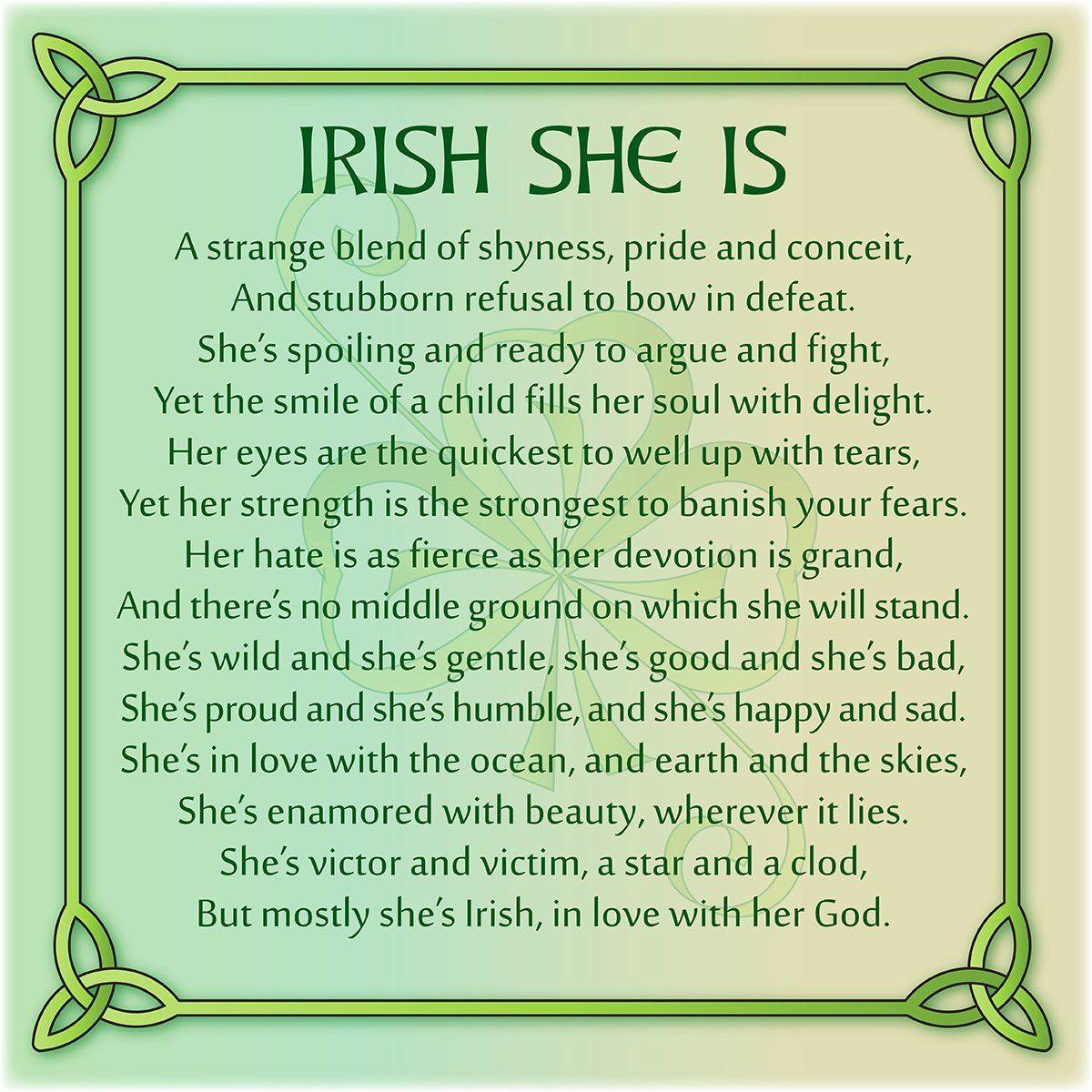
Traditional Irish Poems: A Legacy of Lyrical Enchantment
Irish literature has a rich and celebrated past, with poetry being one of its most enduring and cherished forms. Traditional Irish poems, steeped in centuries of oral storytelling, capture the spirit and essence of the Emerald Isle like no other.
Structure and Style
Traditional Irish poems exhibit a distinctive structure and style that has evolved over time. These elements include:
- Verse Forms: Irish poems often adhere to established verse forms such as quatrains, hexameters, and sonnets.
- Rhyme and Meter: Many Irish poems employ intricate rhyme schemes and metrical patterns, creating a pleasing melodic effect.
- Imagery and Symbolism: Irish poets draw upon a rich tapestry of imagery and symbolism rooted in the natural world, mythology, and Irish culture.
- Narrative and Lyrical Forms: Irish poetry encompasses both narrative poems that tell a story and lyrical poems that express emotion and reflection.
Themes and Inspiration
Traditional Irish poems explore a diverse range of themes, including:
- Nature and the Landscape: The Irish landscape, with its rolling hills, vibrant greenery, and crashing seas, serves as a constant source of inspiration.
- Love, Loss, and Heartbreak: Irish poems often delve into the complexities of human emotion, particularly the bittersweet experiences of love and loss.
- History and Folklore: Irish poetry is heavily influenced by Irish history, mythology, and folklore, incorporating ancient legends and historical events into its verses.
- Social and Political Commentary: Irish poets have also used their voices to address social and political issues, reflecting on the struggles and triumphs of the Irish people.
Noteworthy Examples
1. "The Lake Isle of Innisfree" by W.B. Yeats
In this lyrical masterpiece, Yeats expresses his longing for a peaceful retreat on the remote Lake Isle of Innisfree, where he can escape the hustle and bustle of modern life.
"I will arise and go now, and go to Innisfree,
And a small cabin build there, of clay and wattles made;
Nine bean-rows will I have there, a hive for the honey-bee,
And live alone in the bee-loud glade."
2. "The Ballad of Molly Malone" (Traditional)
This popular ballad tells the tragic story of Molly Malone, a beautiful fishmonger who dies young from a broken heart. The song captures the spirit of Irish storytelling, with its catchy tune and memorable chorus.
"In Dublin’s fair city, where the girls are so pretty,
I first set my eyes on sweet Molly Malone,
As she wheeled her wheelbarrow through streets broad and narrow,
Crying, "Cockles and mussels, alive alive oh!"
3. "The Lament for Owen Roe O’Neill" (Anonymous)
This poignant elegy mourns the death of Owen Roe O’Neill, an Irish general who fought against English rule in the 17th century. The poem expresses the profound grief and loss felt by the Irish people.
"O Dark Owen Roe O’Neill, who’s gone forever,
May your fame endure and your soul find its rest,
The nation’s honor and pride, you’ll live on forever,
In the hearts of your people, the bravest and best."
How to Write Traditional Irish Poems
- Study existing Irish poems to gain an understanding of their structure, style, and themes.
- Immerse yourself in Irish culture and mythology for inspiration.
- Use your imagination to create vivid imagery and evocative symbolism.
- Consider the use of traditional rhyme and meter schemes.
- Don’t be afraid to experiment with different verse forms and formats.
Tips for Reading Irish Poems
- Take your time and savor each word and line.
- Pay attention to the rhythm, rhyme, and imagery.
- Identify the central themes and emotions expressed.
- Consider the historical and cultural context of the poem.
- Read aloud to appreciate the musicality of the language.
Question and Answers
Q: What is the difference between Irish ballads and other forms of Irish poetry?
A: Ballads are typically narrative poems that tell a story in a colloquial and often humorous tone. They are often sung or recited in pubs and at gatherings.
Q: How has Irish poetry been influenced by English literature?
A: Irish poetry has been influenced by both English language and literature, particularly during the period of British rule in Ireland. Irish poets have adopted some elements of English poetic style while maintaining their own unique voice and perspective.
Conclusion
Traditional Irish poems are a testament to the rich cultural heritage of the Emerald Isle. They offer a glimpse into the heart and soul of the Irish people, capturing their joys, sorrows, and aspirations. By studying, reading, and writing Irish poems, we can connect with this timeless tradition and appreciate the beauty and power of the written word.
Please remember to cite the original authors of any poems used in this article. Plagiarism is a breach of literary and ethical standards. Share and credit the work of others to foster a thriving and respectful literary community.
